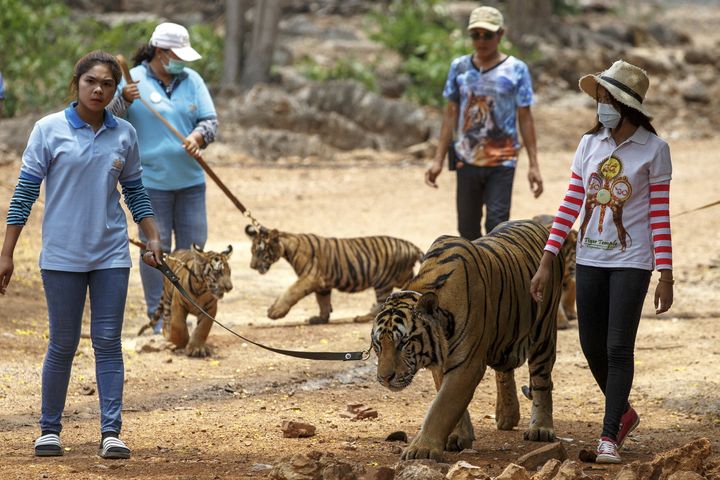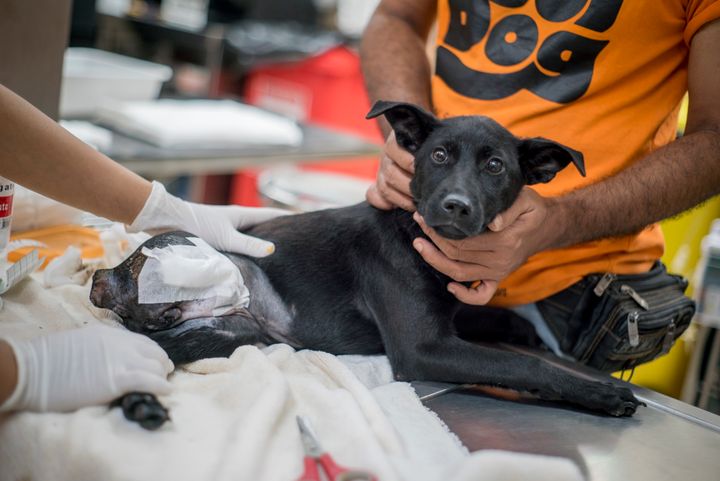
Many parts of the world are now so accessible that we are able to travel to places on a reasonable budget and take part in incredible experiences that, decades ago, would have been only available for a lucky few. But as exciting new experiences are offered by the tourism industry, it is incumbent upon us not to take advantage of the areas we visit.
I recently returned from a holiday to Thailand. I went there to volunteer with an animal charity that I support. But arriving in Bangkok and walking down the backpacking hotspot of Khao San Road, I became disheartened by the number of cruel and unethical experiences on offer to unsuspecting tourists.
Although many tourists who take part in activities such as elephant rides are not aware of the abuse that is inflicted on wildlife, it is our responsibility to make sure that we do as little harm as possible when travelling abroad.
For World Responsible Tourism Day, here’s a list of ethical ways to enjoy everything Thailand has to offer:
Avoid elephant rides
It may seem like a great idea to have your picture taken while sat on the back of an Asian elephant, but the animals can be kept in terrible conditions when they are away from the gaze of tourists.
Elephants are often captured illegally for sale to the tourism industry and babies are frequently stolen from their mothers in the wild and beaten until they become compliant to the mahouts. World Animal Protection estimates that there has been a 30% rise in the number of elephants at tourism venues in Thailand since 2010, with some venues receiving more than 1,000 visitors a day.
In order for an elephant to become compliant to their captor, a number of ‘breaking techniques’ are used, especially when they are young. The techniques involve young elephants being chained and tortured until their spirit is broken and they submit to the keeper’s will.
During the rides, bullhooks are often used to keep the animal under control, causing severe suffering. If you look closely at elephants at most of these tourist parks, you will likely see puncture marks in their ears and feet where the bullhooks have been used.

Don’t have a wildlife selfie
Sadly, it is not uncommon to see photographers selling the opportunity for a picture with a wild animal, such as monkeys, baby chimps and even big cats in Thailand. Although these animals may look adorable and there may not seem to be any obvious signs of abuse, they are often taken as babies from the wild and sometimes their protective mothers will even be killed in the process.
If animals such as lions and tigers allow you get close to them, it will often be because they have been sedated to make them easier to handle.
I saw such behaviour while in Kanchanaburi. There was a woman with a wild cat trying to entice tourists to have their photos taken with the animal, who was clearly drugged and exhibiting signs of abnormal behaviour. And although the notorious Tiger Temple has been shut down by Thai authorities, World Animal Protection fears that another will pop up in its place.
Elephants, tigers and cheetahs would not allow a human to stroke or stand close enough for a photo in the wild. If you are able to do any of these things at a tourist attraction then, chances are, something isn’t right.

Volunteer responsibly
Just because you want to avoid elephant rides and other wildlife cruelty while on vacation, it does not mean that you can’t have meaningful and exciting experiences in Thailand.
As more tourists become aware of the cruelty involved in certain attractions, ethical alternatives are opening their doors and offering experiences that don’t impede on the welfare of the animal.
Wildlife Friends Foundation Thailand, located about 110 miles south of Bangkok in Amphoe Thayang, Petchaburi, looks after a range of rescued animals, including gibbons, bears and elephants. They try and rehabilitate animals as much as possible and if they cannot be returned to the wild, then they are given a place to live in peace.
I’m sure there are other ethical wildlife attractions in Thailand, but look closely at how much contact you have with a wild animal and don’t be afraid to query something if you feel as though something doesn’t feel right.

Animal charities that help the local community
I volunteered with two fantastic animal charities while in Thailand recently - Soi Dog and Baan Unrak Thai Animal Sanctuary. Many people may have heard of the former, although few have probably encountered the latter.
Soi Dog, situated mainly in Phuket, but with a site in Bangkok and several outreach programmes, helps to manage Thailand’s street dog population ethically. Spaying and neutering not only helps the millions of street dogs estimated to currently live in Thailand, but it also helps the local community.
Founded in 2003, Soi Dog has sterilised more than 173,000 animals to date and they are always looking for volunteers to help them at their headquarters in Phuket.
Their incredible medical team also treats dogs and cats for other illnesses and injuries – in Thailand road traffic accidents involving animals are frightfully common. Their hospital cares for scores of animals desperately needing help. In addition to this, Soi Dog runs a shelter for dogs and cats who can’t be returned to the streets and runs an adoptions programme for those needing a forever home.
For a much smaller operation, head to Baan Unrak Thai Animal Sanctuary in Sangkhlaburi, near the Myanmar border in northern Thailand. The sanctuary cares for the local street dog population and offers pet healthcare for owners nearby – without the sanctuary the nearest animal hospital is a four-hour drive away in Kanchanaburi.
